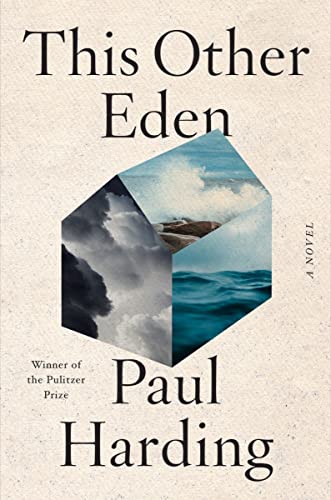This Other Eden
In 1793, when Benjamin Honey, a former slave, and his wife Patience, an Irish immigrant, arrived at an abandoned Penobscot island off the coast of Maine, it was to escape intolerance and cultivate his dream of an apple orchard – an Eden of his own. Through the decades, his mixed-race descendants became more isolated, only allowing the few to join the community who would work together for survival and protect their peaceful existence.
Harding takes time to lay down the foundation of his story, but the flow picks up when the narrative refocuses on 1911 and the primary storyline of Benjamin’s great-granddaughter Esther, her son, her grandchildren, and the other inhabitants of the island. Harding treats his characters with such compassion and respect that the reader can’t help but fall in love and admire their strength of spirit when we learn of their extreme poverty, hardscrabble existence, quirks and oddities, and heartaches. They know nothing of the world outside their community and have minimal contact from the mainlanders except for Matthew Diamond, a retired schoolteacher, who comes and provides education for the children. His good intentions to make life better for the islanders has increased the attention from the mainlanders, who are appalled and judgmental of these mixed-race people, the inbreeding that has resulted from generations of isolation, and their living conditions. Disastrous and heartbreaking consequences will be the result.
This Other Eden is based on a true story of Malaga Island off the coast of Maine when, in 1912, the government evicted the islanders, eliminated all trace of their existence, and sent some to institutes for the “feeble minded.” The power of Harding’s writing is unequalled as this powerful story will break your heart, and the inhumanity inflicted will haunt you long after the book is closed; but it is a story that must be told.










